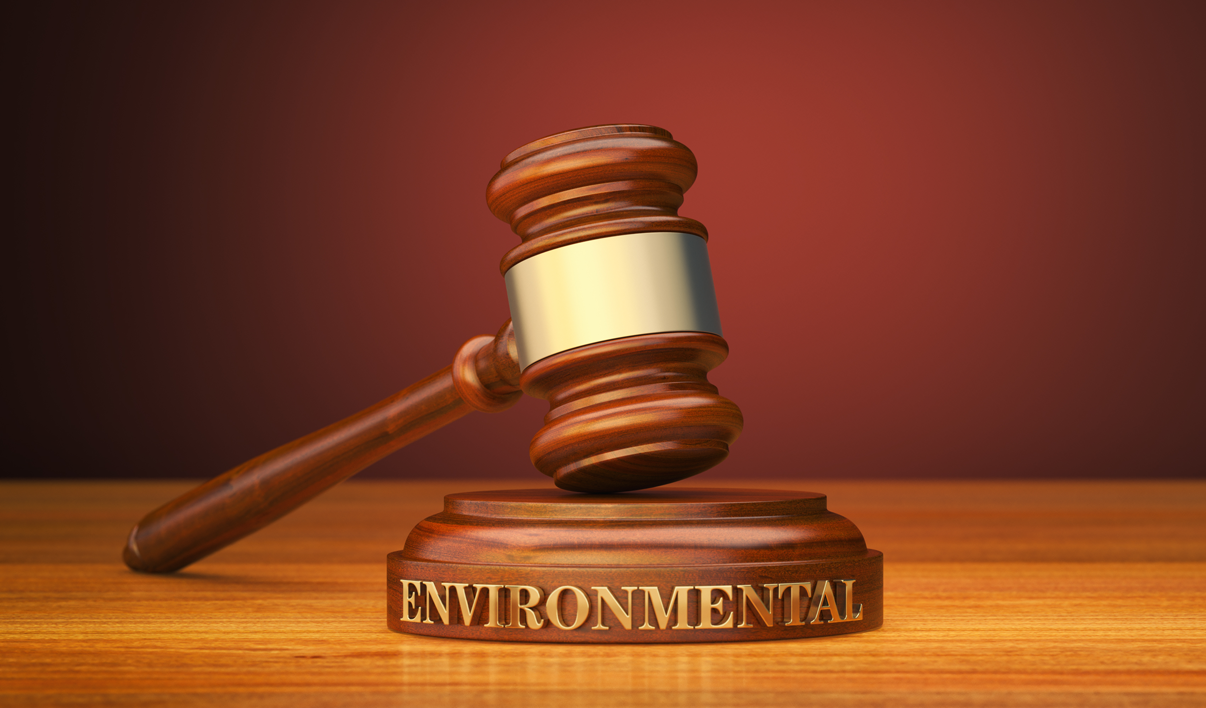During the last decade, federal state authorities have sparred with themselves and with states over regulatory standards limiting greenhouse gas (GHG) emissions from automobiles. Nationally, the US Environmental Protection Agency (EPA) and the National Highway Traffic Safety Administration (NHTSA) share authority over fleetwide and individual vehicle standards. EPA applies authority under the Clean Air act (CAA) and NHTSA applies authority under the Energy Policy and Conservation Act of 1975 (EPCA) including Corporate Average Fuel Economy (CAFÉ) standards. In addition, the state of California has unique CAA authority over vehicle emission; in recent years, Democratic presidential administrations generally produce federal-state cooperation, whereas Republican presidential administrations produce conflicts. (I’ve written about these issues several times, most recently HERE). True to this pattern, on December 21, 2021 EPA issued tighter vehicle emission rules covering Model Years (MY) 2023 through 2026, and NHTSA rescinded its (Trump era) rule preempting California’s stricter GHG emission standards. The remainder of this note discusses these new rules, within the context of ongoing rulemakings.
Read MoreAudit, Compliance and Risk Blog
US tightens federal standards for greenhouse gas emissions from automobiles
Posted by Jon Elliott on Mon, Jan 24, 2022
Tags: Environmental, Greenhouse Gas, ghg, CO2 Emissions
Biden Administration Proposes to reverse most Trump Administration revisions to Federal Environmental Impact Assessment rules
Posted by Jon Elliott on Wed, Oct 20, 2021
The federal Council on Environmental Quality (CEQ) has proposed to revise its regulations administering the National Environmental Policy Act (NEPA) of 1969. NEPA requires federal agencies to assess the environmental effects of their proposed actions, and incorporate this information into their decisions. Government-wide guidance is provided by the White House’s CEQ, established by NEPA and appointed by the President. CEQ issues formal regulations that agencies must follow, and guidance documents that provide additional advice. CEQ also reviews agencies’ NEPA implementation programs, and publishes annual national Environmental Quality Reports.
Read More
Tags: Environmental, EPA, NEPA, CEQ
Biden Administration proposes to expand EPA’s budget significantly
Posted by Jon Elliott on Wed, Jul 28, 2021
On May 28, the Biden Administration issued its budget proposal for federal Fiscal Year (FY) 2022 (October 1, 2021 through September 30, 2022). As anticipated based on statements from Mr. Biden while a candidate and since his inauguration, the proposal includes many dramatic changes from former president Trump’s proposed budgets. The administration proposes a 21.6 % ($2 billion) increase in the budget for the Environmental Protection Agency (EPA) budget above EPA’s adopted 2021 budget of $9.2 billion. Roughly 90 percent of this increase is related to climate controls and environmental justice, broadly defined.
Read More
Tags: Environmental, EPA
South Coast Air Quality Management District to regulate warehouses’ indirect emissions
Posted by Jon Elliott on Tue, Jul 13, 2021
The federal Clean Air Act (CAA) requires the U.S. Environmental Protection Agency (EPA) to establish and maintain national air quality standards, including criteria for permits and other authorizations issued to (potential) emission sources by state or local air quality management agencies (with EPA itself as the default regulator if other agencies fail). Forms of authorization include permits for specified stationary emission sources, and equipment/emission standards for mobile sources and some components of stationary sources. Almost all requirements apply to “direct sources” – the equipment or activity that directly produces emissions.
Read More
Tags: Environmental, EPA, CAA, SCAQMD, emissions, warehouses, WAIRE
Supreme Court reminder in Superfund case: settling a case under one environmental law may not affect potential liability under others
Posted by Jon Elliott on Wed, Jun 23, 2021
The many overlaps and disjunctions in environmental protection laws mean that many situations are potentially subject to multiple laws and their associated enforcement provisions. On May 24, the US Supreme Court decided the latest incarnation in a long-running dispute between the federal government and the territory of Guam over contamination at a landfill, which included an earlier round involving the Clean Water Act (CWA) and the latest round involving the Superfund law (Comprehensive Environmental Response, Compensation, and Liability Act (CERCLA)) (Guam v. United States). The court decided that a 2004 settlement in a CWA enforcement case did not – and could not – affect Guam’s latest search for financial contributions to cleanup under CERCLA. This decision provides not just specific clarification of the relationship between two CWA and CERCLA cost recovery provisions, but also a general reminder about the need to craft settlements carefully.
Read More
Tags: Environmental, CWA, Supreme Court, CERCLA, environmental law
Biden directs agencies to review all Trump administrative actions
Posted by Jon Elliott on Mon, Feb 22, 2021
President Biden is moving quickly to review and revise many of former President Trump’s administrative actions. As I discussed HERE, the fastest mechanisms for these reversals are executive orders (EOs) and slightly less formal executive memoranda from the President or his agency heads. One of the EOs signed on president Biden’s first day of office starts immediate action to review all Trump administrative actions. EO 13990 of January 20, 2021, “Protecting Public Health and the Environment and Restoring Science To Tackle the Climate Crisis”, applies to all federal agencies but focuses on President Trump’s environmental actions. The remainder of this note discusses this particular EO.
Read More
Tags: Environmental, climate change, Environment, Environmental Policy
How, and how fast, can Democrats make environmental policy changes they’ve promised?
Posted by Jon Elliott on Wed, Feb 17, 2021
President Biden and the Democratic majorities in Congress have announced sweeping plans to reverse most of the Trump Administration’s environmental policies. The timing and practicality of these reversals depends very much on each of the targeted policy’s legal status – laws, regulations, Executive Orders, or guidance documents. The remainder of this note comments on each of these sets of situations, highlighting examples of each. I’ll discuss them in order ranging from quickest/easiest to most time consuming/difficult.
Read More
Tags: Environmental, climate change, Environment, Environmental Policy
EPA revises ignitability characteristic of hazardous waste
Posted by Jon Elliott on Wed, Aug 12, 2020
National waste management laws and regulations provide management requirements to the perceived hazards of each category, under overall regulation by the Environmental Protection Agency (EPA). Effective September 8, 2020, EPA will make extensive technical revisions to its standards for the “ignitability characteristic”, so entities that generate or manage wastes that might be ignitable should now review those wastes and associated management requirements.
Read More
Tags: Environmental, EPA, Hazardous Waste, SWDA
Regional Greenhouse Gas Initiative prepares to add a new member
Posted by Jon Elliott on Wed, Aug 05, 2020
One of the longest running sub-national greenhouse gas (GHG) control efforts in the U.S. has been the Regional Greenhouse Gas Initiative (RGGI) program. RGGI provides a cap-and-trade program covering GHG emissions from targeted fossil fuel power plants in participating northeastern states. The program is preparing to add a new participating state in 2021 -- Virginia.
Read MoreTags: Environmental, Greenhouse Gas, ghg, RGGI, Fossil Fuel, CO2 Emissions
Environmental Protection Agency issues administrative inspection rules
Posted by Jon Elliott on Wed, Jun 03, 2020
Effective March 2, 2020, the Environmental Protection Agency (EPA) has issued rules governing the agency’s administrative civil inspection procedures (40 CFR s. 31.1). These new rules meet a requirement created by President Trump’s Executive Order (EO) 13892 (“Promoting the Rule of Law Through Transparency and Fairness in Civil Administrative Enforcement and Adjudication”), issued October 9, 2019 (I wrote about this EO HERE). The new rules apply to on-site civil inspections conducted by EPA personnel, and to federally credentialled contractors and Senior Environmental Employment (SEE) employees conducting inspections on EPA’s behalf; they do not apply to criminal investigations, nor to state and state-credentialled inspections.
Read MoreTags: Business & Legal, Environmental risks, Environmental, EPA, clean water, clean air










